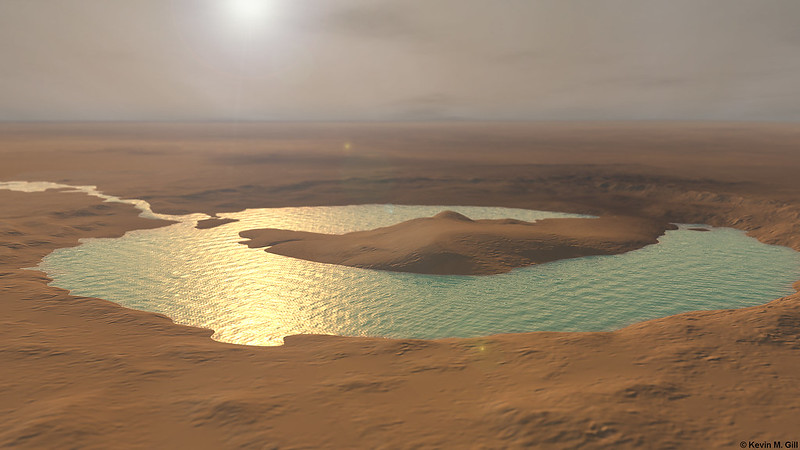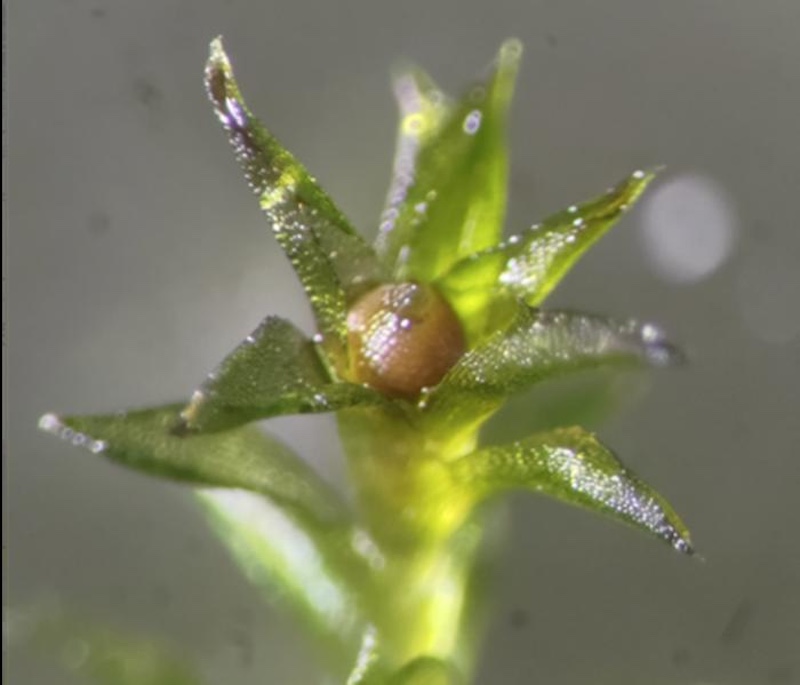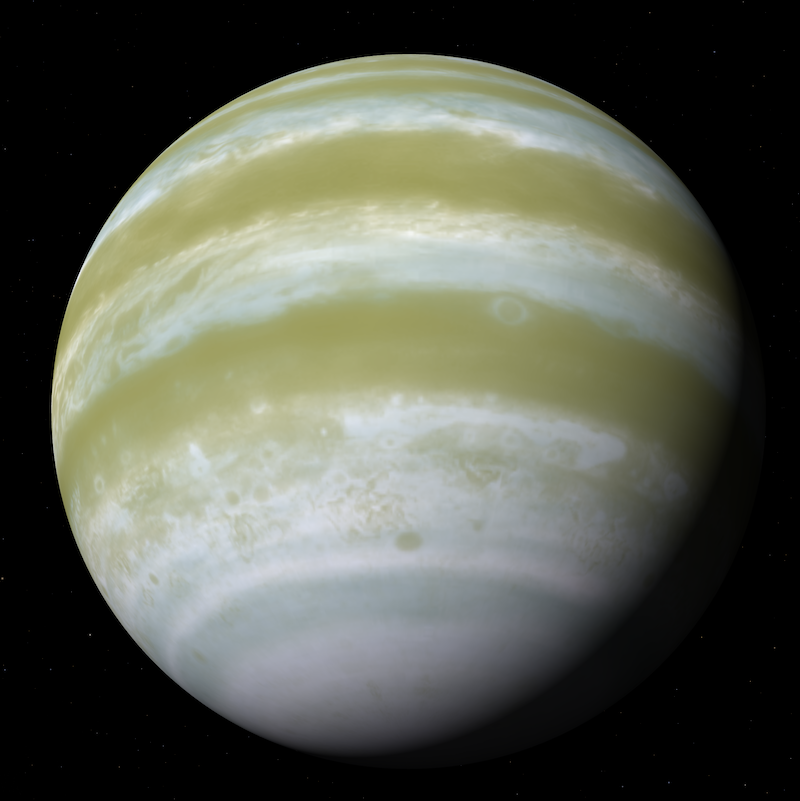Now Reading: New study says rain on ancient Mars fed rivers and lakes
-
01
New study says rain on ancient Mars fed rivers and lakes
New study says rain on ancient Mars fed rivers and lakes


- Mars is an extremely dry desert world, with no liquid water on its surface. But was it always that way? Ancient now-dry riverbeds and lakebeds show that Mars was once brimming with water. How did they form?
- Heavy precipitation – rain or snow – created Mars’ river systems that fed the lakes, a new study shows.
- Scientists used a computer simulation to compare erosion from rain or snow to melting ice. The rain or snow model best explained the erosion features still seen on Mars today.
Did it rain on ancient Mars?
Mars today is a bone-dry desert world. But a few billion years ago, you could have played in rain puddles or perhaps a snowbank. That’s the conclusion of a new study from researchers at the University of Colorado Boulder. The geologists said on April 21, 2025, that heavy precipitation – either rain or snow or both – likely formed and fed many of the river channels and valleys that we can still see clearly etched into the Martian surface. The new evidence supports the scenario that early Mars was at least relatively warm and wet.
The researchers published their peer-reviewed findings in the Journal of Geophysical Research: Planets on April 21, 2025.
University of Colorado Boulder: Did It Rain or Snow on Ancient Mars? New Study Suggests It Did www.colorado.edu/today/2025/0…
— AAS Press Office (@press.aas.org) 2025-04-22T15:05:50.614Z
Warm and wet or cold and dry?
The findings add to the debate of whether Mars was always cold and dry or if it was warmer and wetter billions of years ago. Some scientists think it was warmer, while others say it was cold. Even after decades of research and exploration of Mars by rovers and landers, they have not come to a consensus.
We know that Mars has long had abundant ice, both at its poles and underground, but was that water ever liquid? Ancient riverbeds, lake deposits and even possible ocean sediments – and vacation-style beaches – suggest it was. But how?
Jezero crater, which NASA’s Perseverance rover is exploring, was once a lake. Like Gale crater, a river once flowed into this lake. The rover has studied the ancient river delta inside the crater, which we can still easily see from orbit. Perseverance found large boulders that the river transported. And that required a lot of water. Co-author Brian Hynek at the Laboratory for Atmospheric and Space Physics (LASP) at the University of Colorado Boulder said:
You’d need meters deep of flowing water to deposit those kinds of boulders.
A digital simulation of Mars
It’s apparent that Mars was once awash in water. And not just as frozen ice. Lead author Amanda Steckel was at the University of Colorado Boulder for the study and is now at the California Institute of Technology (Caltech). She said:
It’s very hard to make any kind of conclusive statement, but we see these valleys beginning at a large range of elevations. It’s hard to explain that with just ice. You could pull up Google Earth images of places like Utah, zoom out, and you’d see the similarities to Mars.
Watch: Earth or Mars? Test yourself with this quick quiz

Ice or snow or rain on ancient Mars?
For their own study, the researchers used digital computer simulations to see how water would have shaped the Martian surface. Did rain or snow help form the channels and valleys, or was it just melting ice? The study suggests it was indeed rain or snow. Co-author Gregory Tucker at the Department of Geological Sciences at the University of Colorado Boulder originally developed this simulation model for Earth studies.
The model simulated terrain close to the Martian equator, where many of the old river channels can be found. In the simulation, water was added in two different ways, both as rain or snow and as ice. In addition, the researchers even simulated melting ice caps. The model simulated the flows of water for periods of tens to hundreds of thousands of years.
Strikingly different results
The simulations provided markedly different results depending whether the water was precipitation or melting ice. For example, with melting ice caps, the river valleys created were mostly at high elevations. They were also limited to the terrain around the edge of the melting polar ice cap. But it was different for the valleys created by precipitation, whether rain or snow. They were more widespread and at various elevations. Some were below the average surface elevation, while others formed at elevations up to 11,000 feet (3,300 meters).
Steckel said:
Water from these ice caps starts to form valleys only around a narrow band of elevations. Whereas if you have distributed precipitation, you can have valley heads forming everywhere.
So which scenario is closer to what we actually see on Mars? The precipitation one. The ancient riverbeds we see today are largely around the equator, far from where any meltwater from the ice caps would have flowed, and vary in elevation.

How did Mars stay warm?
The results are yet more evidence for a much wetter Mars in the past. Scientists still don’t know exactly how the planet was able to maintain the warmth needed for as long as it did. But the Curiosity rover might have just helped that mystery, too. Another recent study focused on siderite carbonates the rover has found in Gale crater. They are evidence that Mars used to have a carbon cycle similar to that on Earth, and that the carbon dioxide atmosphere used to be much thicker and warmer than it is today. Liquid water could have been abundant in those conditions.
But those conditions didn’t last, and Mars lost most of its atmosphere and water. As Hynek noted:
Once the erosion from flowing water stopped, Mars almost got frozen in time and probably still looks a lot like Earth did 3.5 billion years ago.
Incidentally, it does still snow on Mars today. The Mars Phoenix lander recorded snow falling from clouds, NASA reported in 2008. In Mars’ really thin atmosphere, however, the snowflakes evaporated before reaching the ground, at least in this location.
Bottom line: Did it rain on ancient Mars? A new study suggests that heavy precipitation – rain or snow – helped form rivers that fed into lakes billions of years ago.
Source: Landscape Evolution Models of Incision on Mars: Implications for the Ancient Climate
Via University of Colorado Boulder
Read more: How hard did it rain on Mars?
Read more: New discovery of carbonates on Mars could solve big mystery
The post New study says rain on ancient Mars fed rivers and lakes first appeared on EarthSky.
Stay Informed With the Latest & Most Important News
Previous Post
Next Post
-
 012024 in Review: Highlights from NASA in Silicon Valley
012024 in Review: Highlights from NASA in Silicon Valley -
 02Panasonic Leica Summilux DG 15mm f/1.7 ASPH review
02Panasonic Leica Summilux DG 15mm f/1.7 ASPH review -
 03From Polymerization-Enabled Folding and Assembly to Chemical Evolution: Key Processes for Emergence of Functional Polymers in the Origin of Life
03From Polymerization-Enabled Folding and Assembly to Chemical Evolution: Key Processes for Emergence of Functional Polymers in the Origin of Life -
 04How New NASA, India Earth Satellite NISAR Will See Earth
04How New NASA, India Earth Satellite NISAR Will See Earth -
 05And Thus Begins A New Year For Life On Earth
05And Thus Begins A New Year For Life On Earth -
 06Astronomy Activation Ambassadors: A New Era
06Astronomy Activation Ambassadors: A New Era -
07SpaceX launch surge helps set new global launch record in 2024




















